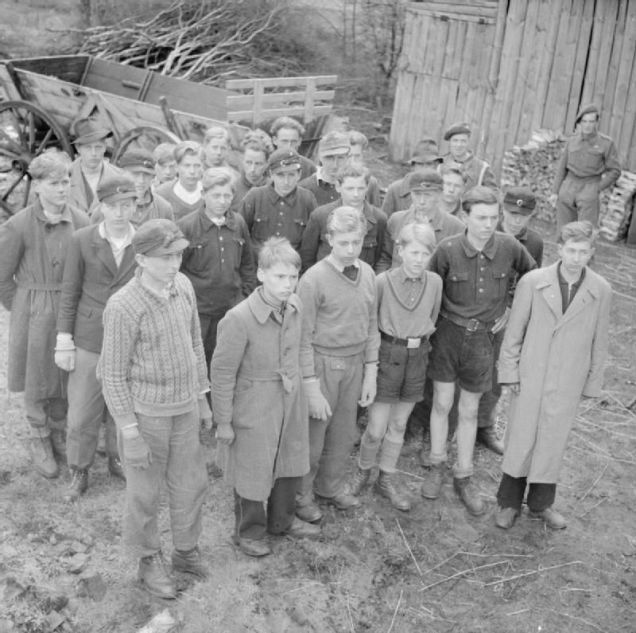Leader of the Hitler Youth
On 23 May 1946, the leader of the Hitler Youth, Baldur von Schirach, started his testimony, which may have been the most lengthy and confusing in the history of the Nuremberg Trials. It got to the point where the judges were seriously discussing whether the defendant should be limited in the length of his speech. However, the defendant himself could not miss the opportunity to present his own biography. The Führer himself entrusted him with the responsibility: “We will raise young people, who will shake the world, who will be gruff, demanding and cruel.” This task was carried out by Schirach in his nursery, where a generation of merciless wolves were being raised for the SS and the Wehrmacht. Schirach himself did not kill anyone. But his numerous pupils committed countless crimes, hanging, shooting and sending people to the gas chambers.
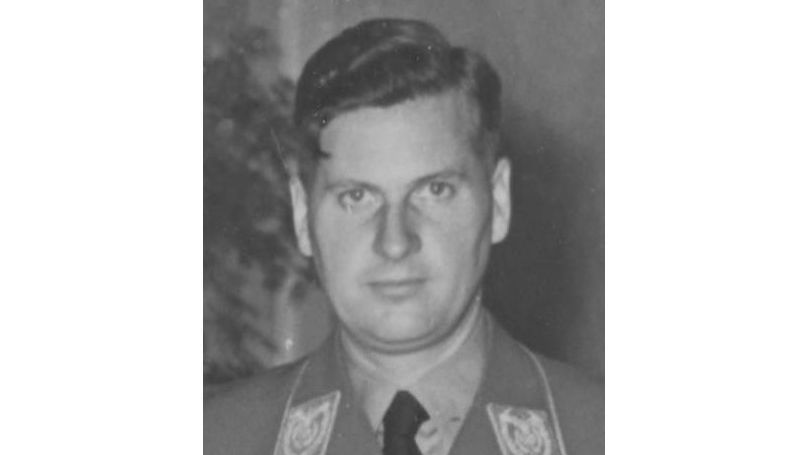
Blitzmädchen shot people like fresh game
“Youth must be indifferent to pain,” the Führer instructed. “There must be no weakness or tenderness in it. I want to see once more in its eyes the gleam of pride and independence of the beast of prey.”
It applied to girls as well. In this sense, gender equality reigned in the Reich. According to eyewitnesses, Nazi youth practiced shooting at human targets in Lvov. They grabbed small children, arranged them in a row according to their height and shot them one by one. Specially trained “Blitzmädchen”, young girls, took part in the executions as well. They were taught how to shoot a machine gun. The murder of small children weren’t all they would become capable of. Mass executions of civilians were organised in the same place in Ukraine, in Rivne. Jewish women, children and old people were driven from the ghetto to the place of execution. Officers from the local garrison were invited to the spectacle with their wives. In their presence, Blitzmädchen shot people like fresh game. Children were thrown into the air and at that moment Blitzmädchen fired at them. The luckiest shots were given a loud round of applause.
The Hitler Youth was organised even before Hitler came to power, in 1926 in Weimar, as a National Socialist youth movement. It was just one of many youth associations in Germany at that time. Baldur von Schirach passionately wanted to unite all German youth organisations under his leadership and subordinate them to the NSDAP. In fact, the very idea that the Hitler Youth should be the only youth union belongs to Schirach, who convinced Hitler of the importance of working with the younger generation.
It took him a while to convince Hitler, but still he did it. After numerous intrigues he eventually achieved his goal, taking over as head of the Hitler Youth in 1931. Very soon, youth organisations independent of the NSDAP ceased to exist – this was Schirach’s doing. At first, the decision to send children to this wolf nursery was voluntary for parents. But after the “Law on the Hitler Youth” was issued in December 1936, participation in the movement became essentially obligatory; all other youth associations were banned.
At the initiative of the youth leader, agreements with the SS and the Wehrmacht were signed, according to which the wolf nursery turned into their personnel reserve. Ultimately, by 1940, 97% of young people of military age were part of the Hitler Youth.
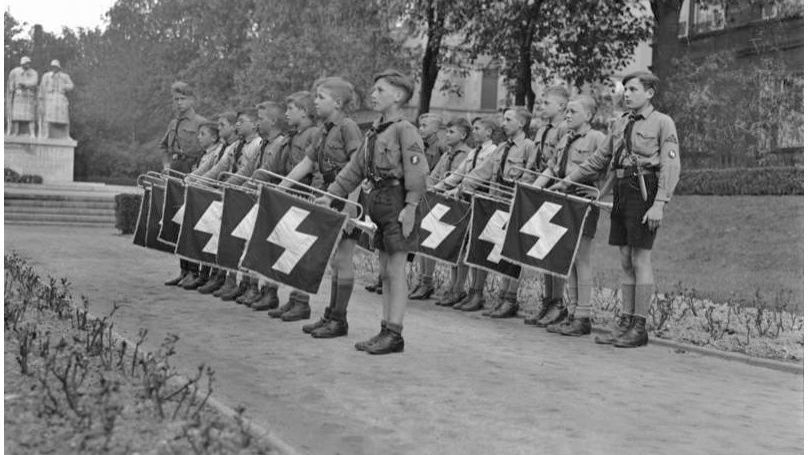
Schirach's pupils enthusiastically worked in concentration camps, and later formed the SS Einsatzgruppen, which perpetrated atrocious crimes in the occupied territories of the USSR. The 12th SS Panzer Division, "Hitlerjugend", created in 1943, which fought on the Western and Eastern fronts, became widely known. Most of the division's servicemen were young people from the Hitler Youth, who had been specially trained. The young people fought well. However, the division was seriously damaged in battles against the allies, and after fighting with the Red Army, it actually ceased to exist. The remnants of the division surrendered to the Americans on 8 May 1945.
Boy Scouts with swastikas
Young people fell into the merciless hands of the Nazis from childhood. Younger group consisted of 10 to 14 years old boys – the Deutsches Jungvolk (German Youth), and 14 to 18 years old boys formed the Hitler Youth itself. Girls between 10 and 14 years of age formed the Jungmädelbund (Girls Union), and 14 to 18 year old girls – the Bund Deutscher Mädel (German Girls' Union). In accordance with the National Socialist ideology, the Union of German Girls was aimed at raising strong and courageous women - companions of soldiers of the Reich, who were also brought up in the Hitler Youth. Becoming wives and mothers, they will raise a new generation in the spirit of Nazism - another batch of wolf cubs. The most determined girls with a penchant for small arms shooting were specially trained.
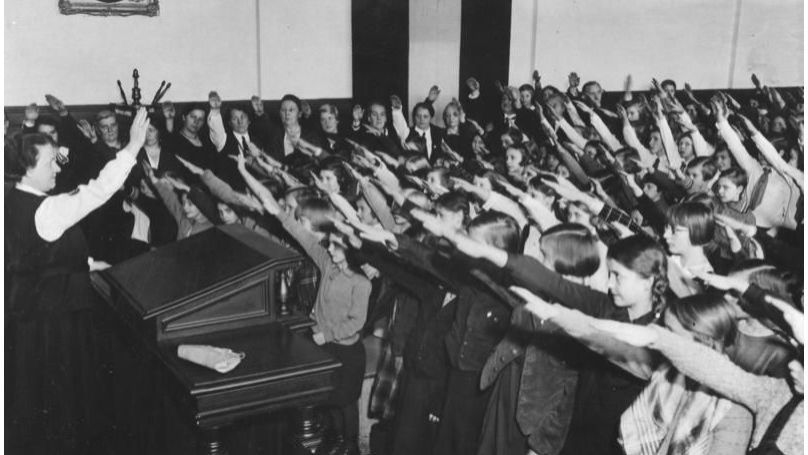
Every year on 15 March, every boy over the age of ten was required to register with the Imperial Youth Headquarters. After careful study of the information about a child and his family (special attention was paid to "racial purity"), he was declared “free from shame”. It was necessary to pass the so-called “boys' tests” and a medical examination in order to join the organisation. Those who were not selected for the Hitler Youth for some reason became outcasts.
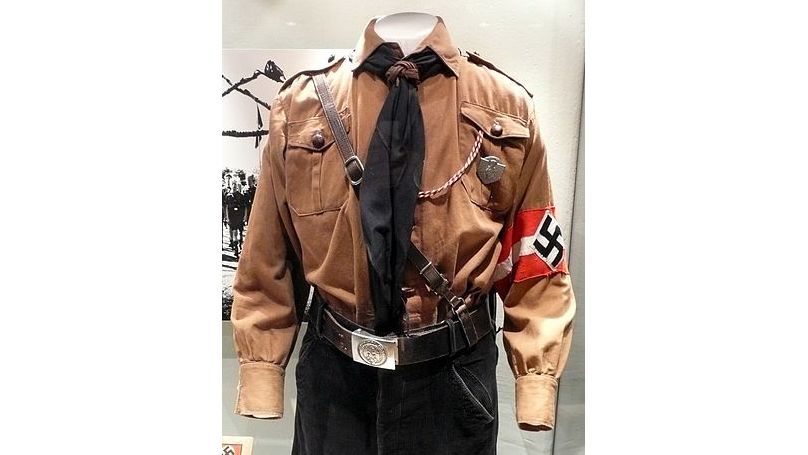
This was followed by a solemn ceremony of admission to the younger age group - the Jungvolk, where a new member of the Hitler Youth was handed a special knife, similar to an army bayonet knife. Each knife bore the inscription "Blood and Honor" or a facsimile of Schirach's signature. The formal ceremonies took place on 20 April - the Fuehrer's birthday, in the presence of the party`s high leaders.
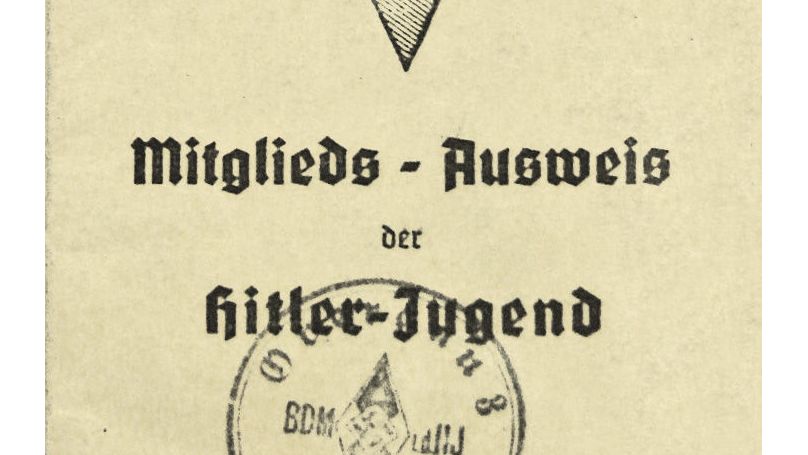
Ideology aside, it could be said that the Hitler Youth was not much different from Boy Scouts or Soviet Pioneer organisations. Children's paramilitary unions were a mass hobby in many countries, including the USSR, USA and Great Britain. Hiking with backpacks, camping out, and various group games to develop strength and endurance were an integral part of such unions. There were aircraft modeling and other clubs in the Hitler Youth. Mentors taught children how to navigate terrain, light a fire, how to march and provide first aid to the injured, and from 1937 they were trained to shoot firearms as well. After shooting, girls could take up dancing or playing the flute. Hitler Youth Members’ Day was a big event.
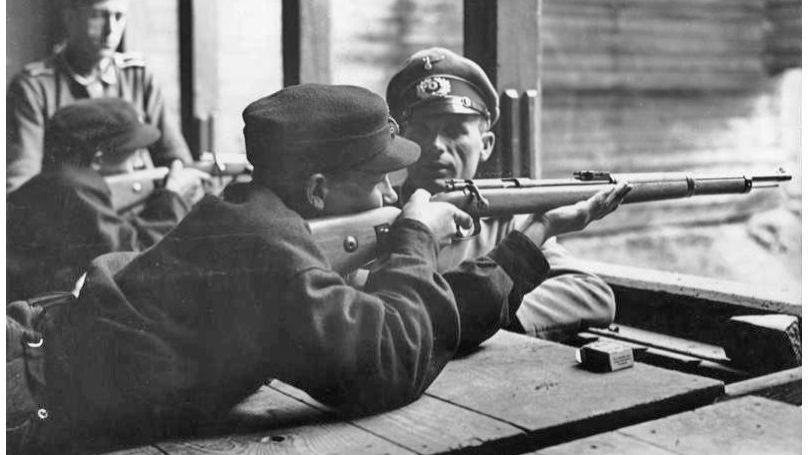
Children and teenagers usually enjoy the Boy Scout life. However, there was much tougher discipline in the Hitler Youth: there were strict mentors who put the emphasis on military training and, of course, on the cult of the Führer. Much attention was paid to the racial theory, politics and the history of the NSDAP and the biography of Hitler. Every teenager was obliged to make a pilgrimage to Hitler's homeland.
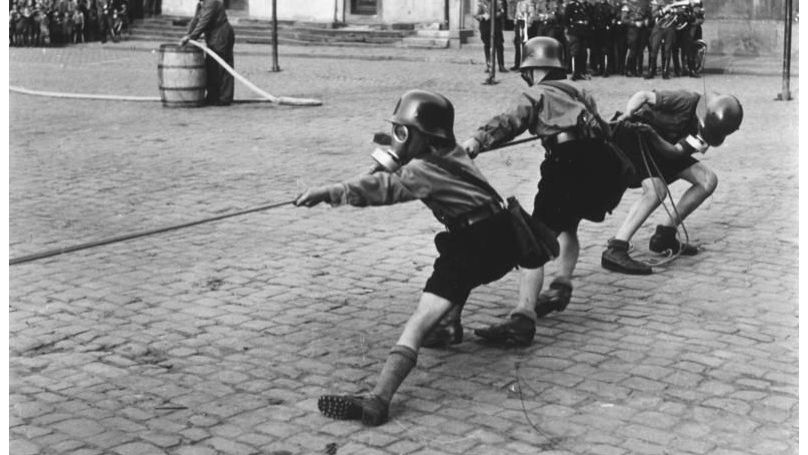
Furthermore, songs sounded by the fire were also quite specific. During the interrogation of Schirach in Nuremberg, a lot of attention was paid to these songs.
(From the transcript of the interrogation of Schirach on 24 May 1946):
“Mr. Dodd (executive trial counsel for the USA): Do you remember the one "Forward, Forward," that you wrote, by the way; another one that you wrote.
Von Schirach: "Forward, Forward" is the Flag Song of the youth organisation.
Mr. Dodd: Well, now, certainly that also contains, does it not, highly inciting words and phrases for young people with respect to their military duty?
Von Schirach: The Flag Song of the youth organization? I cannot see that.
(...)
Mr. Dodd: Well, words, like these: "We are the future soldiers. Everything which opposes us will fall before our fists. Führer, we belong to you," and so on. Do you remember that?
Schirach evasively replied that he does not remember the lyrics well. Then he was quoted another song from the Hitler Youth collection: “Germany awaken! Death to Jewry! People to arms!”. But the defendant's memory failed again.
Schirach, like most of the defendants at the trial, tried to get away with it, claiming that he knew nothing about the concentration camps. However, it was proven that he had visited them. The only thing he admitted was the fact that his students fought at the front: “I knew about events in the East. I did not know that young men who volunteered to go into the Waffen-SS were used during the war to guard concentration camps.” Nevertheless, he personally signed an agreement with Himmler, which provided for the recruitment of young people in the SS units, which guarded the concentration camps. Being confused, Schirach sometimes blurted things out: “I thought at that time that concentration camps were something quite normal.”
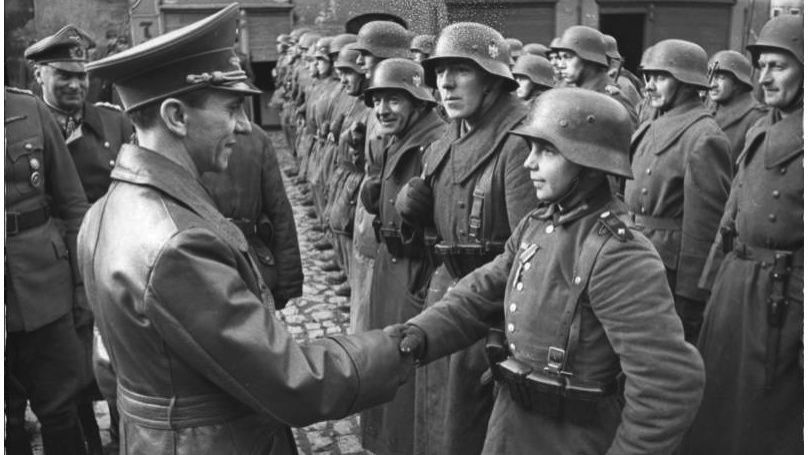
Henry Ford vs. Rousseau and Pestalozzi
Meanwhile, the youth of Baldur von Schirach himself in no way foreshadowed that this man could become interested in German revanchism and consider the concentration camps to be something normal. He was not even German: his father was a Lusatian Sorb; his mother was an American from Philadelphia. The family spoke only English; he began to study German at the age of five. His father, who once served as an officer in the Guards regiment, retired and became the director of a theatre.
Since childhood, Baldur had been fond of art: he wrote poetry and played the violin. At the age of ten (at the same age when German children joined the Hitler Youth), his parents sent him to an elite boarding school in Thuringia, where the upbringing of children was based on the ideas of humanists Rousseau and Pestalozzi. However, it did not prevent Baldur from becoming a staunch anti-Semite. Schirach admitted that his views were influenced by Henry Ford's book “The International Jew”. Ford was a staunch anti-Semite who himself maintained a personal correspondence with Hitler before the war.
In the summer of 1928, Baldur visited America with his mother, where he met his uncle, a Wall Street banker. He offered his nephew a good position. But Schirach turned down the offer - by this time he was already making a career in the Nazi party.
His life changed in Munich, where he arrived in 1924 to study art history. That`s when a turning point in his serene life happened. He was probably influenced by the suicide of his older brother, who could not come to terms with the defeat of Germany in the First World War. After that, 17-year-old Schirach joined the so-called People's Union of Squires, which was led by former officers from the illegal organization Black Reichswehr. In March 1925, together with other "squires", he guarded the hall where recently released from prison Hitler spoke. After the meeting, young Schirach was personally introduced to Hitler.
The meeting with the Führer made a huge impression on Schirach. He immediately joined the NSDAP and the SA in 1927.
Later he entered Hitler's inner circle and climbed his career ladder. He really possessed organisational skills and was an energetic man. Besides, he benefited from his marriage: in 1932, Schirach married Henriette Hoffmann, the daughter of Hitler's old friend and personal photographer Heinrich Hoffmann, who kindly provided valuable photographic material to the prosecution of the Nuremberg Trials in 1945.
Henriette knew Hitler from the age of ten; she actually grew up in front of him. It is difficult to say whether Hitler influenced the decision of the young people to marry, but at the wedding of the von Schirachs, he was best man. However, Hitler had this honor at many other weddings, among his subordinates and like-minded people.
Rebel Henriette
It was Henriette herself who later put an end to her husband's career.
Schirach annoyed many people with his aristocratic manners, especially Bormann, who persistently intrigued against him. For example, there was a lot of talk about Schirach's interest in "girl's bedrooms". These intrigues eventually resulted in the demotion of Schirach: Arthur Axmann replaced him in the Hitler Youth, and Schirach was sent to Vienna as a Gauleiter (party leader). Bormann didn`t stop: he retold the Fuehrer anecdotes about Schirach, which were popular among the Viennese. But nevertheless, Henriette was the one who contributed to the final break with the Führer.
The Schirachs were family friends of Hitler and Eva Braun and often stayed at the Alpine residence of the Führer in the Berghof. Once, at the request of the famous conductor Wilhelm Furtwängler, Henriette asked Hitler to allow the performance of Tchaikovsky, Ravel, Debussy and other banned composers. She played a disc with Tchaikovsky's Italian Capriccios to persuade him. Hitler stared at the gramophone as if it was his enemy and demanded an end to the “concert”. “I have failed. Bormann laughed at me,” she wrote.
Once on the night of Good Friday in 1943, at a reception with Hitler, Henriette von Schirach told the Führer about what she had seen in Amsterdam: that the SS men brutally drove the frightened women into train carriages, how they shouted and the children cried ... Soon, some SS officer offered her the opportunity to buy jewelry of unknown origin. Henriette kept asking the Reichskommissar of the Netherlands, Arthur Seyß-Inquart, about the affair, but he dodged the topic. “The Führer was shocked,” Henriette von Schirach recalled. “At first, he was silent just like the seventeen other men present during the conversation. Then he turned to me and I saw how weak he was […]. I felt sorry for him and at the same time I hated him. He slowly got up and started shouting at me: ‘You are sentimental! Why do you care about these Jewish women! All this is sentimental humanistic nonsense! (Hitler often yelled and the shout was his weapon.) Baldur and I left’.”
As Goebbels ironically noted in his diary: "The Schirachs suddenly showed sympathy after almost 60,000 deported Jews had walked right past the door of their house."
Goebbels was right. In Nuremberg, Schirach tried to convince the judges that he opposed the extermination of Jews, and supported their deportation only. As usual, he was trying to escape responsibility. It turned out during the trial that the Gauleiter of Vienna knew perfectly that Jews were going to concentration camps on the territory of Poland while signing the documents for their deportation - not to a new place to live, but to death. In one of his speeches, he cynically called the deportation of Jews "a contribution to European culture".
Henriette von Schirach was one of the few wives of criminals who admitted her mistakes and spoke about her pangs of conscience: “We didn't want to hear anything. We behaved recklessly and thought what we were doing was absolutely right. There were too many festivities and gifts, starting with gloves, one of which was knitted with “Heil” and the other with “Hitler”, and ending with paintings by old masters and jewelry, the origin of which the wives did not think about. (...) And suddenly I realised that we ourselves had chosen this path and committed injustice. We loved what should not be loved, and hated what should not be hated. We served the cause of evil and could not go back without dragging all our friends into the abyss.”
Henriette filed for divorce while her husband was serving the sentence handed down to him at Nuremberg. In 1956, she wrote a book, “The Price of Glory”, about her Nazi past.
Sources:
Alexander Zvyagintsev “Rapacious gleam in eyes”. Rossiyskaya Gazeta, 25 June 2018
“The Nuremberg Trial” Collection of materials in 2 volumes. Ed. K.P. Gorshenin. M., 1955
Peter Romanov
